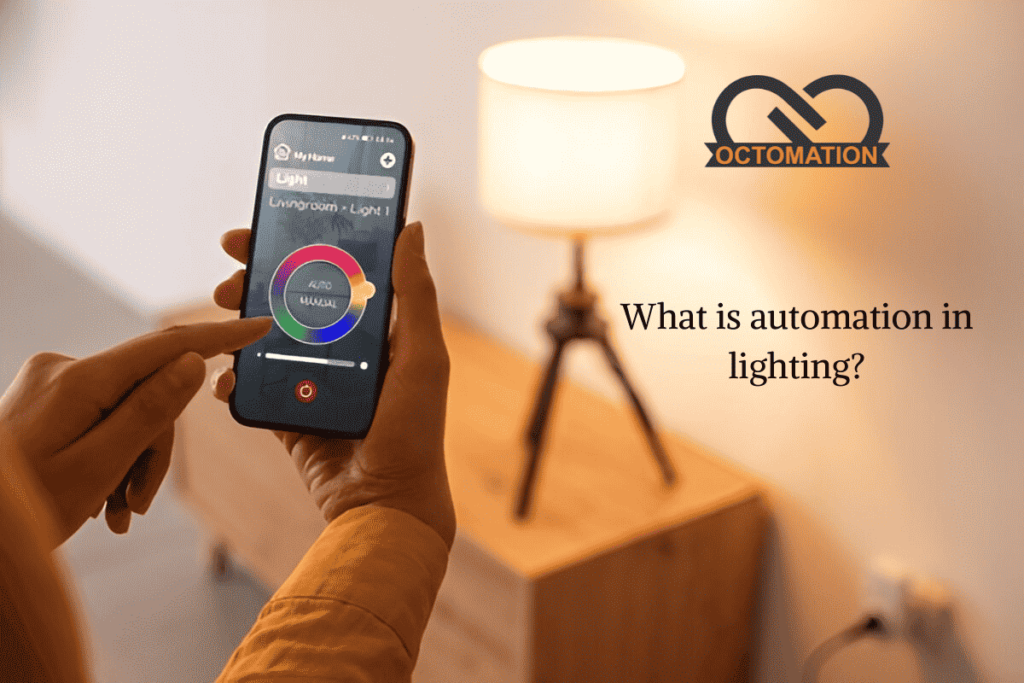What is automation in lighting?

One of the most revolutionary developments in the age of smart homes and intelligent technology is lighting automation. Fundamentally, lighting automation combines cutting-edge technologies with conventional lighting systems to provide automatic control according to schedules, occupancy, user preferences, and ambient light levels. As pioneers in this field, we think that developers, companies, and homeowners looking to improve comfort, security, and energy efficiency must grasp this idea.
A Complete Guide to Lighting Automation Understanding
Lighting automation is the process of controlling lighting systems with technology rather than by hand. From basic motion sensors that activate lights when a person enters a room to complex centralized systems that manage the lighting infrastructure of an entire building depending on preset settings, environmental cues, and user behavior, these systems can take many different forms.
Automated lighting systems can operate independently with separate control hubs or be linked to home automation company in delhi platforms. Automated lighting has developed into a responsive, easy-to-use, and effective solution for contemporary living with the growth of IoT and smart gadgets.
Essential Elements of a Lighting Control System
Understanding the fundamental elements of lighting automation is crucial to understanding how it operates. Every component is essential to the operation of the system:

Intelligent Light Bulbs and Fixtures
Control hubs and smartphone apps can easily communicate with modern smart bulbs thanks to their embedded wireless communication protocols, which include Zigbee, Z-Wave, Wi-Fi, and Bluetooth.
Sensors
Using motion, occupancy, daylight, and infrared sensors, lighting conditions are automatically adjusted based on environmental light levels and activities.
Hubs and Controllers
These serve as the system’s brains, controlling sensor inputs, carrying out schedules, and responding to voice or remote commands. Controllers can operate alone or as a component of larger smart home ecosystems such as Apple HomeKit, Google Home, or Amazon Alexa.
Interfaces for Users
Voice assistants, smartphone apps, and touch panels all provide user-friendly interfaces that let users schedule, modify, and personalize lighting settings to their liking.
Lighting automation advantages include:
Cost savings and energy efficiency.
The ability of lighting automation to reduce energy waste is one of the strongest arguments for investing in it. Lights only turn on when necessary, thanks to motion detectors and daylight sensors. In order to save energy and extend the life of the lightbulb, users can also adjust the dimming settings.
Improved Practicality
Constant manual lighting adjustments are eliminated with automated lighting. Preset scenarios allow the lighting to vary based on the time of day, mood, or activity, such as watching a movie, eating, or reading.
Enhanced Protection
Even when you’re not there, lights can be configured to switch on or off automatically when motion is detected or at predetermined periods. This discourages possible invaders by giving the appearance of occupation.
Customization and Control of Ambience
Lighting has the power to alter a space’s atmosphere significantly. Custom scenes and dynamic mood lighting are made possible by automated lighting systems, which change brightness and color to create the ideal ambiance.
Connectivity to Other Intelligent Systems
Lighting automation provides a cohesive smart home or smart workplace experience by integrating easily with HVAC, security systems, motorized blinds, and audio-visual configurations.
Lighting automation system types include:
Wired systems
These systems, which connect fixtures, sensors, and controllers via physical cable, are perfect for new construction. For big deployments, they are scalable, safe, and dependable.
Wireless Infrastructure
These systems, which communicate between devices via Wi-Fi or radio frequency, are ideal for retrofitting existing structures. Without requiring significant remodeling, they provide flexibility and simplicity of installation.
Hybrid systems
Because of their adaptability and potential for growth, hybrid solutions—which combine the dependability of wired systems with the flexibility of wireless—are becoming more and more well-liked.
Common Applications of Lighting Automation
Automation of Lighting in Homes
Scheduled bedroom illumination, automatic nighttime hallway lighting, and “Welcome Home” sceneries that illuminate designated areas as a homeowner arrives are all advantageous to them. Children and older people can operate the device hands-free thanks to integration with voice assistants.
Business Areas
Through intelligent scheduling and ambient light sensing, lighting automation in workplaces and commercial buildings guarantees ideal illumination levels throughout the day, promotes worker productivity, and lowers operating costs.
Hospitality Sector Hotels utilize lighting automation to provide opulent visitor experiences, including occupancy-based corridor lighting, mood lighting, and automated wake-up lights.
Use in Industry
Motion sensors and daylight harvesting enhance productivity and safety and save overhead lighting expenses in factories and warehouses.
Lighting Automation’s Future
Lighting automation will be essential as we transition to sustainable living and net-zero energy buildings. Systems will be able to understand user behavior, make proactive lighting adjustments, and even anticipate maintenance requirements thanks to the integration of AI and machine learning.
The standard for next-generation systems is being set by voice control, gesture recognition, and circadian rhythm-based adaptive lighting. Additionally, cloud connectivity makes remote access and control possible, giving consumers previously unheard-of control over their lighting settings.
Experience the ultimate in entertainment with a smart home cinema, blending immersive visuals, surround sound, and effortless automation control.
Selecting the Best Partner for Lighting Automation
Putting in place a lighting automation system is an investment in sustainability, safety, and comfort. When selecting a supplier:
Make sure they have solutions that may be customized to meet your needs.
Verify compatibility with current intelligent systems.
Seek dependable software upgrades and post-purchase assistance.
Choose companies that put the security and privacy of data first.
A well-thought-out and well-built system is a wise long-term investment since it improves daily life and raises property value.
Conclusion
The way we use our spaces is being revolutionized by lighting automation. It provides a strong solution for households, workplaces, and companies by fusing intelligent control, energy efficiency, and user comfort. The potential of automatic lighting is only growing due to ongoing technological breakthroughs; therefore, now is the ideal moment to adopt this clever idea.
Related Blogs
Which is better AI or automation?